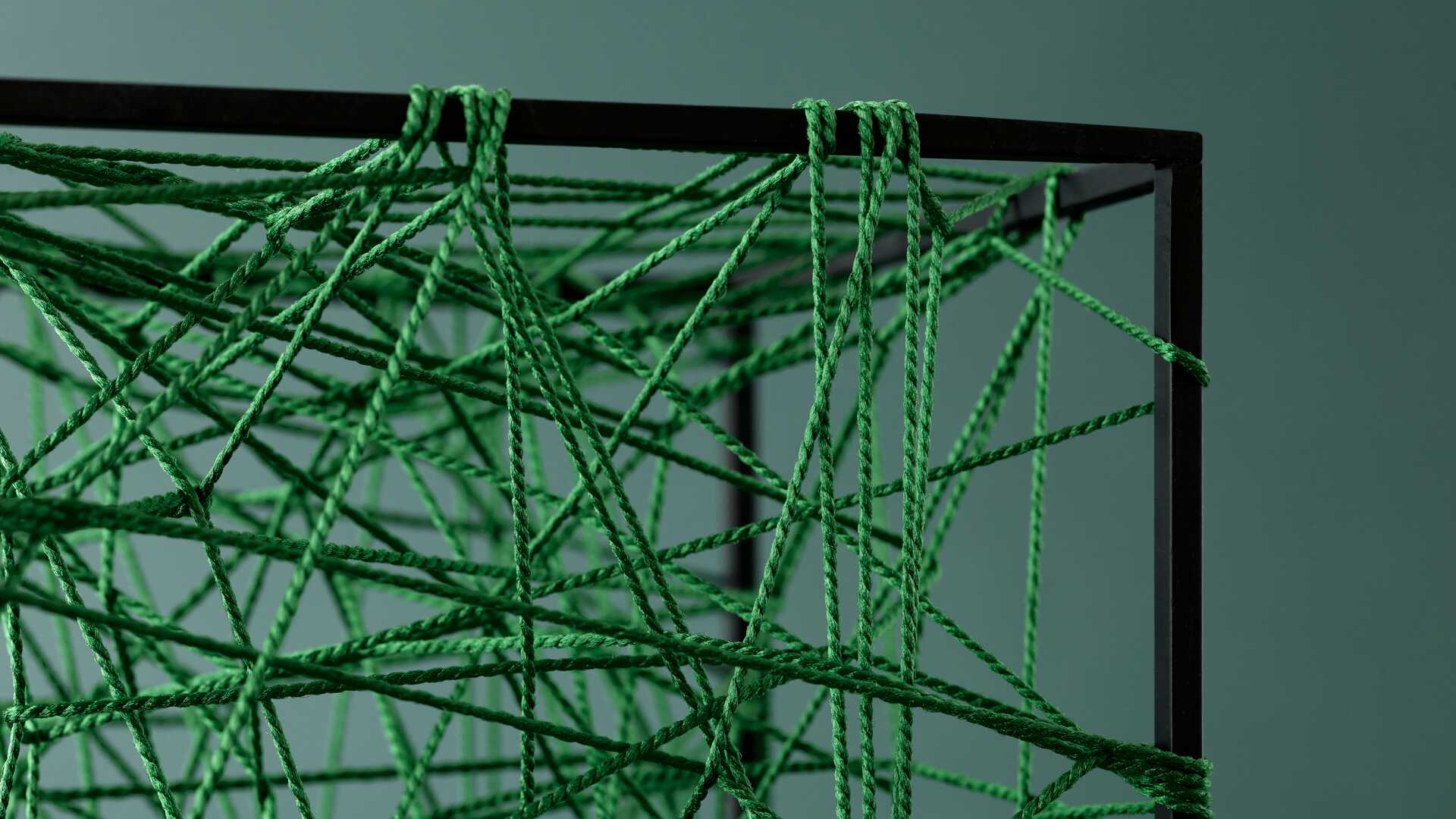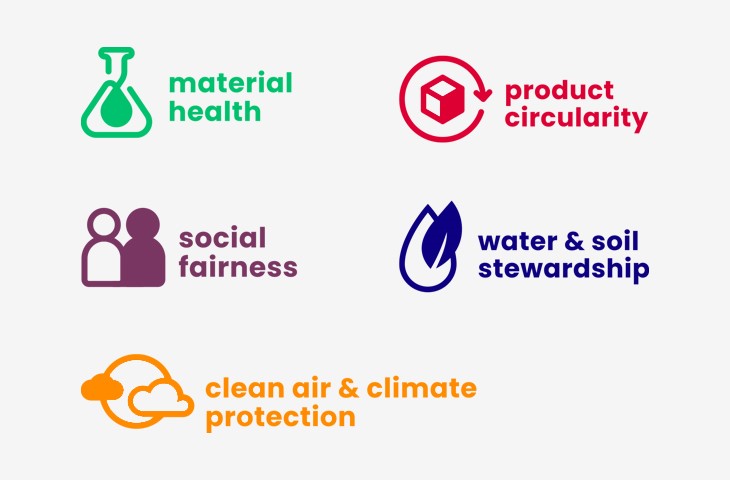
In 2002, William McDonough and Michael Braungart published the book “Cradle to Cradle; Remaking the Way We Make Things”. In 2005, the Cradle to Cradle Certified® Product Programme was created, which is now licensed by the Cradle to Cradle Product Innovation Institute, founded by McDonough and Braungart. More than 10,000 products are Cradle to Cradle Certified®.
In this article we explain why a Cradle to Cradle Design® approach should be the first choice when it comes to developing sustainable interior projects. Focusing on ecofriendly materials in general, and not sustainable flooring, the article explains the concept and challenges of achieving Cradle to Cradle Certified® while clarifying why the certificate should be part of the preferred future standards for architects, interior designers and specifiers. You’ll also get William McDonough’s top 3 recommendations for your future work with Cradle to Cradle Certified®.
We’ve witnessed how the use and significance of Cradle to Cradle certification has increased extensively through the past few years. Companies use the certificate to stress that they do the utmost to take care of people and planet in their development and optimisation of products and processes.
Therefore, we were excited to research the topic further by having William McDonough explain why you should seriously consider using Cradle to Cradle Certified® materials as the baseline in your environmentally safe projects. But before we go there: what’s Cradle to Cradle Certified® really about?
Cradle to Cradle is a product certification that rates the product performance on the 5 criteria illustrated below. You get a score (from Bronze to Platinum) for each criterion and the lowest score defines the overall certification level of your product.

Cradle to Cradle Certified® products are gaining more and more impact in the building industry. Their trustworthiness is recognized in LEED and BREEAM projects, by international corporations like Amazon and Google and by more and more governments.
When you use Cradle to Cradle Certified® building materials, you’re both at the frontline of trying to do the best there is and at the same time you’re humble
But Cradle to Cradle Certified® isn’t just a product certification! It’s the vision of a better tomorrow; a world where human activities don’t leave a negative impact on the planet. Is that possible? No. But it’s still worth striving for as only ambitious goals can take us all the way towards a sustainable future.
There’s no doubt that it takes drastic measures to turn around the way society is built today. COP26 showed that we need to act fast and determined if we’re going to slow global climate change in time. We need to stop snoozing the difficult choices and start acting; even though it hurts and seems extremely difficult due to a complex spiderweb of economic matters, social inequalities and global insecurities.
For product manufacturers, Cradle to Cradle Design® can be the guidance on this difficult journey. Not just to bring down global warming, but also to:
With Cradle to Cradle Certified® you get all that in just one certificate. But due to the complexity you might now ask: Isn’t that difficult?
It’s challenging for manufacturers to work with the Cradle to Cradle Certified® Products Programme. The only way to succeed is to go all-in and make it a part of your mindset and keep the Cradle to Cradle Design® vision in mind when you develop your ideas, search for new suppliers, choose raw materials, manufacture your product, figure out how to handle production waste and plan for product maintenance and end-of-life scenarios. It’s a lot of challenging work for us, the creators of building materials, but it’s necessary to create a sustainable future.
With the above introduction of the concept, challenges and ambitious nature of Cradle to Cradle Design®, we’ll move on to the interview with William McDonough, the founder of the Cradle to Cradle Certified® Products Programme, that leads to his top 3 recommendations for architects, interior designers and specifiers that want to work with the certification.

“With Cradle to Cradle Certified® you know that somebody cared enough to go to the highest quality standard,” William explains. “I think architects, designers and specifiers should use Cradle to Cradle Certified® materials in their projects, because then they can say – at the very least – that these materials and products are to the best of our ability meeting the Cradle to Cradle Certified® standard, that’s about constant improvement, constant innovation and adapting to the future. When you use Cradle to Cradle Certified® building materials, you’re both at the frontline of trying to do the best there is and at the same time you’re humble,” he says.
With Cradle to Cradle Certified® you know that somebody cared enough to go to the highest quality standard.
“When we originally designed the Cradle to Cradle Certified® standard, we decided that it wasn’t just about healthy materials. It was also the whole concept of the circular economy and the idea of a product as a service, which comes from Cradle to Cradle and is now being used by anyone in circular economy, because it’s such an important idea. Cradle to Cradle Certified® products can be used again and again across generations. That’s smart thinking and good economics. So, if you want to change colour in the interior – and the materials are Cradle to Cradle Certified® – it’s okay. Do you destroy the planet for doing that? No, because the materials are designed for reuse. We’re not consuming Cradle to Cradle Certified® materials. We’re using them, and after use they’re reused,” he continues.
“Furthermore, having the five criteria in Cradle to Cradle gives you a choice,” William McDonough says. “You can look at the criteria that excites you the most or all of them. But remember that the overall certification level is the lowest score of the five criteria. You can have Platinum in some criteria and Bronze in others. I don’t think people should be to strangely fixated on what the level is when comparing things. I think anybody who gets into the Cradle to Cradle Certified® Products Program and actually gets certified are on the right track and should be celebrated. If the product is at overall Bronze level, the notion is that it’s not going to be at Bronze level forever. That’s why you should choose Bronze certified products too, because you’re helping the manufacturer to improve – and then we’re all improving together.”
“Architects, interior designers and specifiers have fundamental things that need to be addressed. We always have to look for performance, cost and aesthetics. What we’re adding to that is: Could it be ecologically intelligent? Could it be safe and healthy for humans and the environment? Could it be something that’s inspiring the world we use and the materials? What if we could turn natural sources into resources? That’s the outcome of circular economy”, the Cradle to Cradle author says with a smile.
With these recommendations, we thank William for sharing his thoughts and insights on Cradle to Cradle Design®.
Cradle to Cradle Certified® is your guarantee that the materials used are manufactured with sustainability in mind and a sustainable future as the overall target. The level of the certificate is not that important, since the notion of working together to improve the way we do things are the real purpose. If we design our buildings and world in a way that stops exploiting natural sources and instead focus on using the natures’ non-harmful resources over and over again, we’re looking at a better tomorrow. That’s our aim at Ege Carpets. I hope it’s your aim too. Click to learn more about the Cradle to Cradle Products Programme.
Do you feel inspired and want to learn more? We’re beyond happy to help with any request you might have. So, reach out to your local consultant who's only a click or call away – we can’t wait to hear from you!
Design inspiration delivered straight to you